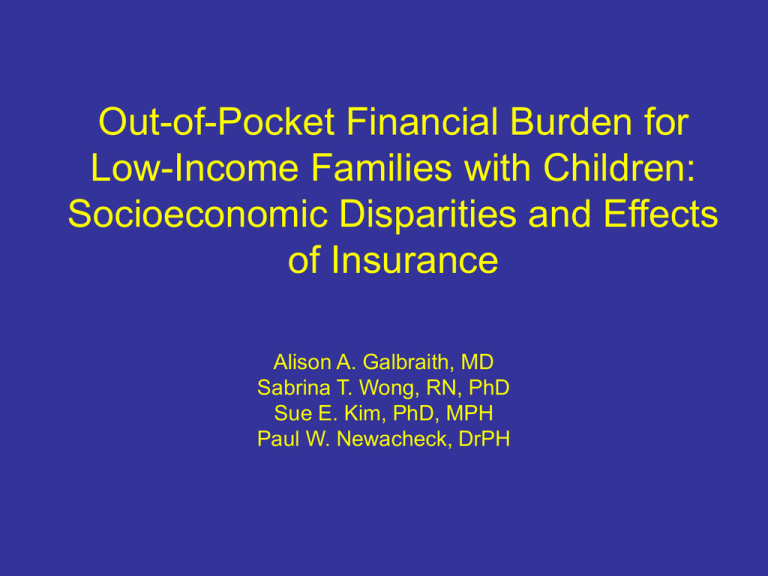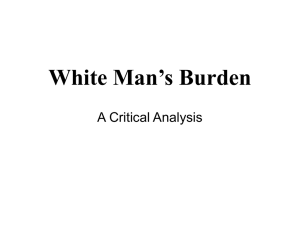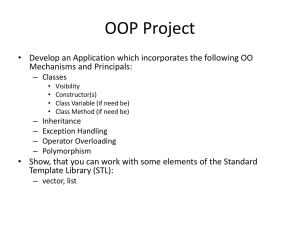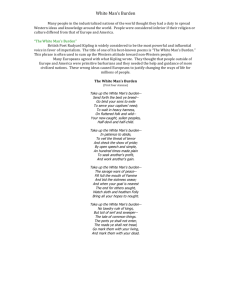Out-of-Pocket Financial Burden for Low-Income Families with Children: Socioeconomic Disparities and Effects
advertisement

Out-of-Pocket Financial Burden for Low-Income Families with Children: Socioeconomic Disparities and Effects of Insurance Alison A. Galbraith, MD Sabrina T. Wong, RN, PhD Sue E. Kim, PhD, MPH Paul W. Newacheck, DrPH Background • Socioeconomic disparities exist in health care access, use, and outcomes • Limited data on disparities in financial burden of out-of-pocket (OOP) health care expenditures • Financial burden may prevent seeking needed care, especially with low-income Background • Family perspective important when examining financial burden – Catastrophic expenses for one family member can impact whole family – Insurance status may differ among family members • Effect of insurance on financial burden for families with children unclear Objectives • To determine whether socioeconomic disparities exist in financial burden of OOP health care expenditures for families with children • To determine whether health insurance coverage decreases financial burden for low-income families Methods • Design: Cross-sectional family-level analysis • Dataset: 2001 Medical Expenditure Panel Survey (MEPS) • Subjects: Families with a child <18 – defined as two or more persons living together in the same household related by blood or marriage Primary Outcome Variable • OOP financial burden: proportion of family income spent on OOP health care expenditures for all family members Total OOP expenditures Family income – 71 families with incomes < $1,000 excluded OOP Health Care Expenditures • Sub-divided into expenditures for: – Health services – Health insurance premiums • 188 families with missing premium data excluded Primary Predictor Variables • Family income category (% FPL) • Family insurance coverage – all members publicly insured all year – all members privately insured all year – mix of public and private with no uninsured periods – partial coverage – all members uninsured all year Analysis • Financial burden computed by averaging financial burden experienced by individual families • t test used to compare mean financial burden between lowest and highest income groups • All data weighted and adjusted to account for complex survey design Analysis • Multivariate linear regression to assess association between insurance and financial burden – Limited to low-income families (< 200% FPL) – Controlled for: family size, race/ethnicity, education, region, MSA, health status, and presence of limitations Analysis • Separate regressions for financial burden with and without premiums • Data log-transformed for regression, then back-transformed for ease of interpretation Results • Sample size: 4,531 families with children • Mean OOP health care expenditures per family: $2,658 $1,153 health care services $1,505 premiums Results • Mean family OOP financial burden: $60 per $1,000 of family income $29 per $1,000 health care services $31 per $1,000 premiums Mean OOP Expenditures per $1,000 Income $140 premiums $120 health services $100 $80 $60 $40 $20 $0 <100% FPL 100-199% FPL 200-400% FPL >400% FPL Mean OOP Expenditures per $1,000 Income $140 premiums $120 health services $100 $80 $60 $40 $20 $0 <100% FPL 100-199% FPL 200-400% FPL >400% FPL OOP Financial Burden for Low-Income Families % Difference in OOP Financial Burden Family Insurance excluding premiums including premiums Public Private Public + Private Partial coverage Uninsured -17.3% 105%* 70.9% 46.2% ref -2.2% 758%* 353%* 129%* ref Controlling for family size, race/ethnicity, education, region, MSA, health status, and limitation of activity * p < 0.05 Health care use for publicly insured and uninsured low-income families • Higher mean number of physician visits per family member for publicly insured (3.6 vs. 0.6; p < 0.001) • Publicly insured less likely to have family member forgo needed care because family needed money for food, clothing, housing (5% vs. 22%; p<0.01) Limitations • Premium data missing on 4% of families • Analysis does not account for complexity of heterogeneously insured families • Measure of financial burden subject to outliers Conclusions • Socioeconomic disparities exist in financial burden of OOP health care expenditures for families with children • For low-income families, full-year public coverage provides greater protection from financial burden than full-year private coverage Conclusions • While public coverage not associated with decreased financial burden for low-income families compared to uninsured, it allows for increased use and less forgone care Implications • Low-income families may benefit from extending public insurance to family members of eligible children • Caution should be exercised with policies to move low-income uninsured into private insurance Acknowledgements • Agency for Healthcare Research and Quality







